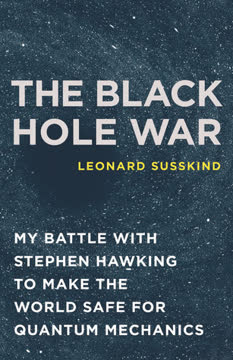Key Takeaways
1. Quantum Mechanics Replaces Classical Intuition with Abstract Math.
The only way we can comprehend it is by rewiring our intuitions with abstract mathematics.
Classical vs. Quantum. Classical mechanics is intuitive because our senses evolved to perceive macroscopic objects and their predictable motions. Quantum mechanics, however, describes the behavior of sub-atomic objects, which are completely beyond our direct sensory experience. This requires a fundamentally different way of thinking.
Different abstractions. Quantum mechanics uses mathematical abstractions that differ significantly from classical ones. Concepts like "state" and "measurement" have distinct meanings and logical structures in the quantum world. Unlike classical physics where measurement simply reveals a pre-existing state, quantum measurement is an active process that can alter the system.
Logic is different. The very foundation of logic changes. Classical physics relies on Boolean logic, where propositions are either true or false. Quantum mechanics introduces a non-Boolean logic where the order of operations matters, particularly for incompatible measurements, challenging our classical understanding of reality.
2. Quantum States Are Vectors, Not Simple Properties.
The space of states of a quantum system is not a mathematical set; it is a vector space.
Vector space states. Unlike classical states which are points in a set (like Heads or Tails), quantum states are represented by vectors in a complex vector space called a Hilbert space. This means states can be added and multiplied by complex numbers, allowing for superpositions.
Superposition is key. A quantum system can exist in a superposition of multiple classical states simultaneously. For a simple spin, the state isn't just 'up' or 'down', but a linear combination (superposition) of 'up' and 'down' vectors, where the coefficients are complex numbers called probability amplitudes.
Normalization matters. The state vector must be normalized (have unit length), meaning the sum of the squared magnitudes of the probability amplitudes must equal one. This ensures that the total probability of finding the system in any possible state is 100%. The overall phase of the vector has no physical meaning.
3. Observables Are Operators, Measurement Yields Eigenvalues.
The observable or measurable quantities of quantum mechanics are represented by linear operators L.
Operators represent observables. Physical quantities that can be measured, like position, momentum, energy, or spin components, are represented by linear operators acting on the state vectors. These operators are also required to be Hermitian, a mathematical property ensuring their eigenvalues are real.
Eigenvalues are results. The possible outcomes of measuring an observable are the eigenvalues of the corresponding operator. If a system is in an eigenstate (an eigenvector of the operator), the result of measuring that observable is certain to be the corresponding eigenvalue.
Probability from projection. If a system is in a general state (not an eigenstate), the outcome of a measurement is probabilistic. The probability of observing a specific eigenvalue is given by the squared magnitude of the projection of the state vector onto the corresponding eigenvector. This is calculated as the inner product of the state vector with the eigenvector, squared.
4. Time Evolution is Unitary, Driven by the Hamiltonian.
The evolution of state-vectors with time is unitary.
Deterministic state evolution. Between measurements, the state vector of a quantum system evolves deterministically according to the time-dependent Schrödinger equation. This equation is linear and ensures that the evolution is unitary, meaning it preserves the inner products between state vectors.
Unitary operators conserve. Unitary evolution is the quantum analog of the classical "minus first law" – information is never lost, and distinctions between states are conserved. If two states are orthogonal at one time, they remain orthogonal under unitary evolution.
Hamiltonian dictates change. The Hamiltonian operator, representing the total energy of the system, is the generator of time evolution in the Schrödinger equation. Its eigenvalues are the possible energy values, and its eigenvectors are the stationary states whose probabilities do not change over time, only their overall phase.
5. Non-Commuting Observables Lead to Fundamental Uncertainty.
If the commutator of A and B is not zero, then both observables cannot simultaneously be certain.
Commutation matters. Two observables can be simultaneously measured with arbitrary precision only if their corresponding operators commute (i.e., the order of applying the operators doesn't matter). If they don't commute, there is a fundamental limit to how precisely both can be known at the same time.
Uncertainty principle. The general uncertainty principle quantifies this limit: the product of the uncertainties (standard deviations) of two observables is greater than or equal to half the magnitude of the expectation value of their commutator.
Heisenberg's relation. A famous example is the position (X) and momentum (P) of a particle. Their commutator is [X, P] = iħ. Applying the uncertainty principle yields the Heisenberg uncertainty relation: ΔX ΔP ≥ ħ/2. This means you cannot simultaneously know a particle's exact position and momentum.
6. Entanglement Creates Non-Classical Correlations in Composite Systems.
In a maximally entangled state, nothing is known about the individual subsystems.
Combining systems. Composite systems, made of multiple subsystems (like two spins), are described by the tensor product of the subsystems' vector spaces. States in this combined space can be product states (where subsystems are independent) or entangled states.
Entanglement is correlation. Entangled states exhibit correlations between subsystems that have no classical counterpart. In a maximally entangled state, like the singlet state for two spins, the state of the composite system is perfectly known, yet the state of each individual subsystem is completely uncertain (described by a mixed density matrix).
Non-local correlations. Entanglement implies that measuring one subsystem can instantaneously affect the state description of a distant, entangled subsystem. While this correlation is "spooky" and non-local in appearance, quantum mechanics ensures that it cannot be used to send information faster than light, preserving causality.
7. Particles Behave as Waves, Described by Wave Functions.
The wave function, ψ(x), of a particle moving in the x direction is the projection of a state-vector |Ψ onto the eigenvectors of position.
Wave function as state. For a particle, the state vector can be represented by a wave function, typically denoted ψ(x), which is a complex-valued function of position. The squared magnitude, |ψ(x)|², gives the probability density of finding the particle at position x.
Position and momentum. Position (X) and momentum (P) are key observables for a particle. In the position representation, X is multiplication by x, and P is proportional to the derivative with respect to x. Their non-commutation ([X, P] = iħ) reflects their mutual uncertainty.
Fourier transform connection. The wave function in the position representation ψ(x) and the wave function in the momentum representation ψ̃(p) are related by a Fourier transform. This mathematical link highlights the wave-like nature, where momentum is related to wavelength (λ = h/p).
8. The Harmonic Oscillator Reveals Quantized Energy Levels.
The lowest energy level is called the ground state and is denoted by ψ₀(x).
Ubiquitous model. The harmonic oscillator, representing a particle under a linear restoring force (parabolic potential), is a fundamental model in physics because many systems behave like oscillators near equilibrium. Its quantum treatment reveals key features of quantum systems.
Discrete energy levels. Unlike the classical oscillator which can have any energy, the quantum harmonic oscillator has discrete, quantized energy levels. These energy eigenvalues are found by solving the time-independent Schrödinger equation for the system's Hamiltonian (kinetic + potential energy).
Ground state energy. The lowest possible energy, the ground state energy, is not zero but ħω/2. Higher energy levels are equally spaced, given by (n + 1/2)ħω, where n is a non-negative integer. This quantization of energy is a hallmark of bound quantum systems.
Last updated:
Review Summary
Quantum Mechanics: The Theoretical Minimum is praised as an excellent introduction to quantum mechanics for readers with some mathematical background. Reviewers appreciate Susskind's clear explanations, focus on spin, and early introduction of entanglement. The book is seen as a bridge between popular science and textbooks, requiring effort but rewarding readers with deep insights. Some find the later chapters more challenging and rushed. Overall, it's highly recommended for those seeking a mathematical understanding of quantum mechanics without oversimplification.
Similar Books
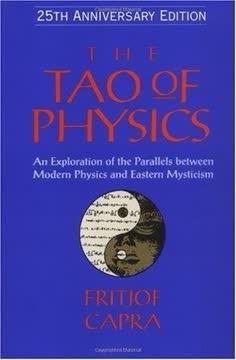
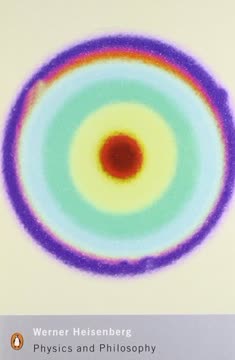
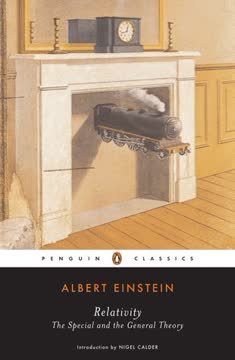

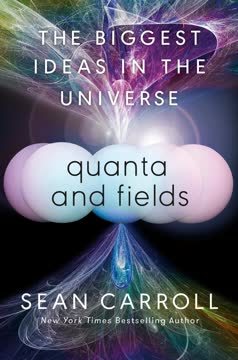

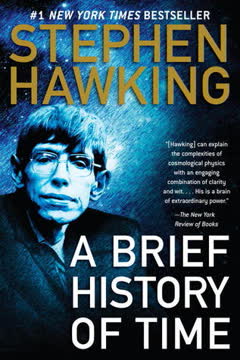
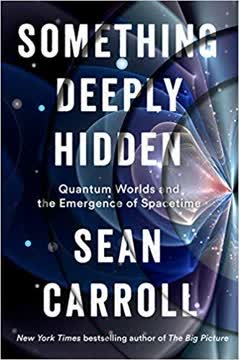
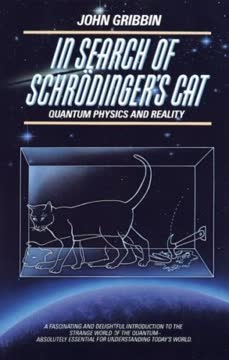
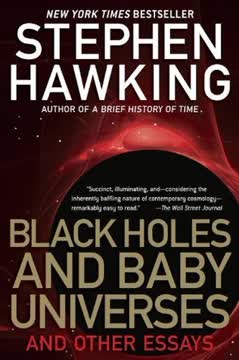
Download PDF
Download EPUB
.epub digital book format is ideal for reading ebooks on phones, tablets, and e-readers.

